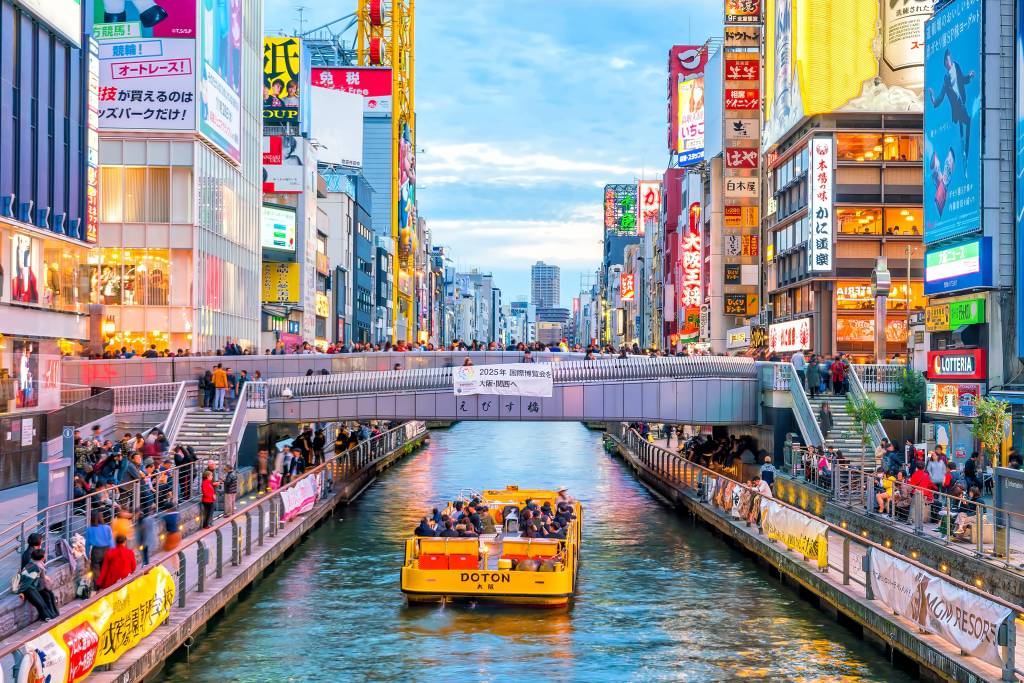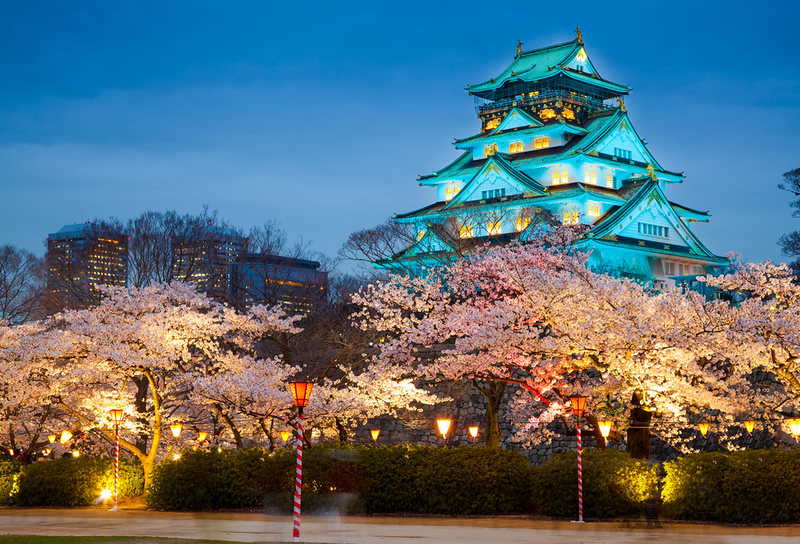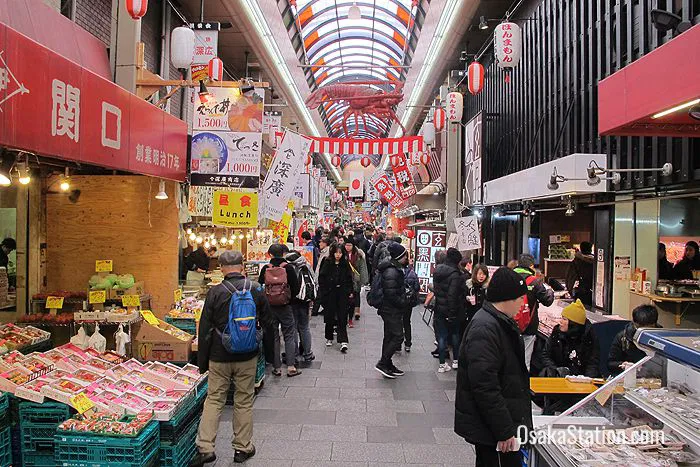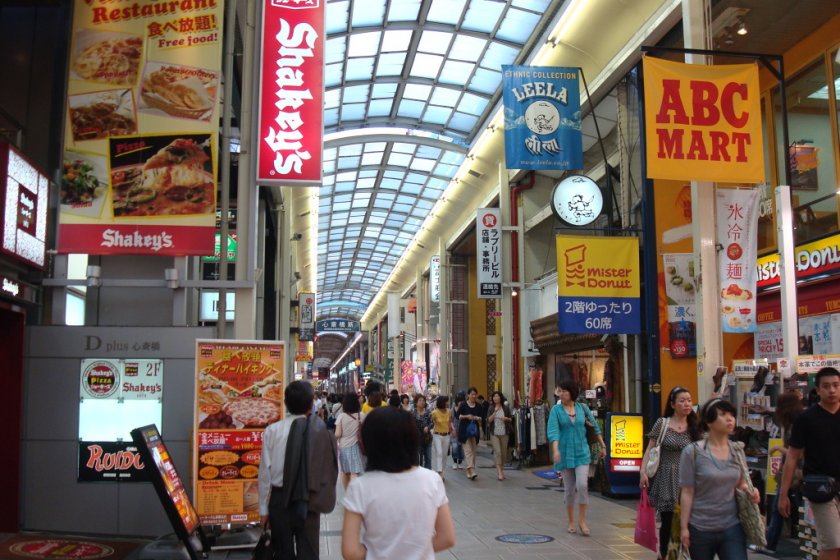Osaka Insider Guide: From Bullet Trains to Hidden Gems

There's something magical about Osaka that keeps drawing me back. Maybe it's the mouthwatering street food that seems to call my name from every corner, or perhaps it's the genuine warmth of locals who are always ready with a joke and a smile. Whatever the reason, this vibrant Japanese metropolis has captured my heart – and I'm not alone. As Japan's third-largest city with 2.7 million residents, Osaka blends centuries-old traditions with cutting-edge innovation in a way that feels both authentically Japanese and uniquely its own.
Journey to Osaka: Tokyo to Osaka Transportation Guide
For most international travelers, the journey to Osaka begins in Tokyo. The 500km distance between Japan's two largest cities can be covered multiple ways, but nothing beats the iconic bullet train experience. When I first boarded the gleaming Shinkansen at Tokyo Station, I couldn't help but feel a childlike excitement – this wasn't just transportation; it was the beginning of my Osaka adventure.
Tokyo to Osaka Shinkansen Options
| Train Type | Journey Time | Stops | Standard Fare | JR Pass Coverage |
|---|---|---|---|---|
| Nozomi | 2h 25m | 3-4 | ¥13,620-¥14,650 | Not covered |
| Hikari | 3h | 5-9 | ¥13,620-¥14,340 | Covered |
| Kodama | 3h 54m | 16 | ¥13,620-¥14,340 | Covered |
The Nozomi service is the fastest option, whisking you from Tokyo to Shin-Osaka in just 2 hours and 25 minutes. Though not covered by the Japan Rail Pass, it's perfect if you're short on time. I've found the Hikari trains offer a great balance – they're covered by the JR Pass and only take about 30 minutes longer. During my last trip in February, I snagged a window seat on the right side (facing forward) and was rewarded with breathtaking views of Mount Fuji on a clear day – a travel tip I now share with everyone.
For budget travelers, overnight buses offer significant savings at around ¥4,000-¥10,000, though the journey takes 8-9 hours. Domestic flights between Tokyo's Haneda Airport and Osaka's Itami Airport can sometimes be found for as little as ¥5,000 and take just one hour in the air, though airport transfers add considerable time on both ends.

Where to Rest Your Head: Osaka's Accommodation Scene
Capsule Hotels: The Uniquely Japanese Experience
When people ask me about my most memorable stays in Japan, I always mention my night at a capsule hotel in Osaka. These futuristic sleeping pods originated right here in Osaka in 1979 with the opening of Capsule Inn Osaka, and they've evolved from simple business accommodations to tourist attractions in their own right.
During my last visit, I stayed at Nine Hours Namba Station, where the sleek, minimalist design made me feel like I'd stepped into a sci-fi movie. For around ¥3,000 (about $20), I got a surprisingly comfortable pod equipped with a high-quality mattress, adjustable lighting, and even white noise options for better sleep. The shared bathrooms were impeccably clean, with high-end toiletries that would put some five-star hotels to shame.
What surprised me most was the sense of community I found. In the common area, I chatted with travelers from Germany, Australia, and Singapore – conversations that might never have happened in a traditional hotel where guests retreat to private rooms. If you're traveling solo and want both an authentic Japanese experience and the chance to meet fellow adventurers, capsule hotels offer a perfect combination.
Best Areas to Stay in Osaka
Choosing where to stay in Osaka can dramatically shape your experience of the city. After multiple visits exploring different neighborhoods, I've found each area has its own distinct personality:
Kita (Umeda)
Perfect for: First-time visitors, business travelers
Why stay here: As Osaka's northern hub, Kita offers exceptional transportation connections to everywhere, including Kyoto (just 30 minutes away). The neighborhood boasts sleek shopping complexes, the spectacular Umeda Sky Building, and some of Osaka's finest dining.
Hotel pick: The Ritz-Carlton Osaka combines Japanese aesthetics with European luxury and houses an impressive art collection.
Minami (Namba/Shinsaibashi)
Perfect for: Foodies, night owls, shoppers
Why stay here: Minami embodies Osaka's famous "eat till you drop" spirit. Staying here means having Dotonbori's food paradise, Shinsaibashi's shopping, and Amerika-mura's trendy vibes all at your doorstep. The energy here is infectious.
Hotel pick: Cross Hotel Osaka offers stylish rooms just steps from the action, with a rooftop bar for nightcap views.
Tennoji
Perfect for: Budget travelers, those seeking local atmosphere
Why stay here: Once overlooked, Tennoji has transformed with the addition of the Abeno Harukas skyscraper. It offers more affordable accommodation while maintaining excellent transport links and proximity to attractions like Tennoji Zoo and Shitennoji Temple.
Hotel pick: Osaka Marriott Miyako Hotel occupies the upper floors of Japan's tallest building, offering unparalleled city views.
Osaka Bay
Perfect for: Families, Universal Studios visitors
Why stay here: This area revolves around Universal Studios Japan and offers harbor views and family-friendly accommodations. It feels removed from downtown, providing a peaceful retreat after busy days.
Hotel pick: Hotel Universal Port is themed to complement the nearby Universal Studios, with thoughtful family amenities.
For my money, staying in Minami offers the quintessential Osaka experience. There's nothing like stepping out of your hotel and immediately being embraced by the neon-lit energy of Dotonbori or ducking into a tiny six-seat izakaya where the chef grills perfect yakitori skewers right before your eyes.
But if you're planning multiple day trips to Kyoto and beyond, Kita's proximity to Shin-Osaka Station (where Shinkansen trains depart) might save you valuable time. During my last visit, I split my stay between both areas for the best of both worlds.
Osaka Castle: A Phoenix Rising from History
Standing beneath the imposing walls of Osaka Castle, it's hard not to feel humbled. This structure has witnessed Japan's dramatic history unfolding over more than four centuries, surviving wars, fires, and lightning strikes. Originally built in 1583 by Toyotomi Hideyoshi, the powerful daimyo who unified Japan, the castle played a crucial role in the establishment of the Tokugawa shogunate that would rule Japan for over 260 years.
What makes Osaka Castle particularly fascinating is its phoenix-like quality – it has been destroyed and rebuilt multiple times. The current iteration, completed in 1931, houses an engaging museum that walks you through this tumultuous history. For a reasonable ¥600 admission, you can explore eight floors of artifacts, interactive exhibits, and historical context.
I recommend arriving early (it opens at 9am) to beat both the crowds and the heat if you're visiting in summer. Take your time exploring the grounds, especially Nishinomaru Garden with its 600 cherry trees that explode into pink clouds during late March and early April. From the observation deck on the 8th floor, the contrast between the ancient castle complex and Osaka's modern skyline creates a perfect metaphor for Japan itself – a nation that honors its past while embracing the future.
Pro tip: While the castle interior is thoroughly modernized (with elevators and air conditioning), the original Himeji Castle about an hour away offers a more authentic samurai-era experience if you're particularly interested in historical architecture. But Osaka Castle's historical significance and beautiful park setting still make it a must-visit.

Day Tripping: Osaka to Kyoto
One of Osaka's greatest strengths is its strategic location in the Kansai region, making day trips remarkably easy. Kyoto, Japan's former imperial capital, lies just 30-45 minutes away, creating a perfect opportunity to contrast Osaka's commercial energy with Kyoto's refined temples and gardens.
During my week in Osaka, I found myself drawn to Kyoto twice – first for the famous bamboo groves of Arashiyama and later for an evening stroll through the atmospheric Gion district. The transportation options between these sister cities are plentiful:
- JR Special Rapid Service: My preferred option for convenience and value. Departing from Osaka Station, these trains reach Kyoto in just 30 minutes for ¥580 (covered by the JR Pass). They run frequently throughout the day, and I never waited more than 15 minutes.
- Shinkansen: The bullet train from Shin-Osaka to Kyoto takes only 15 minutes but costs ¥1,450 for an unreserved seat. If you're already holding a JR Pass, it's a time-saving luxury.
- Hankyu and Keihan Lines: These private railways offer direct access to different parts of Kyoto. The Hankyu Line connects Umeda to Kawaramachi (central Kyoto) in 44 minutes for ¥400, while the Keihan Line runs from Yodoyabashi to areas like Gion in about 50 minutes for ¥410.
What surprised me was how distinct these neighboring cities feel. Where Osaka embraces its merchant roots with boisterous markets and street food culture, Kyoto projects a more restrained elegance. Experiencing both cities provides a more complete understanding of Japan's cultural tapestry, and the ease of travel between them means you don't have to choose – you can base yourself in lively Osaka while still experiencing Kyoto's serene temples and shrines.
Dotonbori: Osaka's Beating Heart
If I could distill the essence of Osaka into a single street, it would be Dotonbori. This canal-side entertainment district embodies the city's "kuidaore" (eat until you drop) philosophy with its dizzying array of restaurants, food stalls, and the most fantastical signage I've ever seen. Giant mechanical crabs wave their claws above seafood restaurants, a massive pufferfish glows in the night, and the iconic Glico Running Man has been welcoming visitors since 1935.
On my first evening in Dotonbori, I felt almost overwhelmed by the sensory experience – the sizzle of takoyaki (octopus balls) on griddles, the savory aroma of okonomiyaki (Japanese savory pancakes), the neon lights reflecting in the canal, and the calls of enthusiastic restaurant staff inviting passersby to try their specialties.
Dotonbori wasn't always a food paradise. Originally developed in 1612 as a theater district, it evolved over centuries into today's entertainment hub. The canal that runs alongside it once transported goods and patrons; today it offers pleasant boat tours that provide a unique perspective on the area's famous billboards.
Must-try food experiences include kushikatsu (deep-fried skewers) at Daruma, whose original location has been serving customers since 1929, and takoyaki from Aizuya, where the crispy exterior gives way to a molten interior with perfectly tender octopus. Just be prepared to wait in line – locals and tourists alike are willing to queue for these authentic tastes.
Dotonbori is at its most magical after sunset when the neon lights transform it into a photographer's dream. Take your obligatory photo with the Glico Man at Ebisubashi Bridge, then wander the side streets where you'll often find smaller, family-run restaurants serving food every bit as delicious as their more famous neighbors, but with shorter lines.
Maximizing Your Visit with the Osaka Amazing Pass
After calculating the costs of each attraction and subway ride during my planning, I discovered the Osaka Amazing Pass – and it completely transformed my experience. This city pass combines unlimited public transportation with free entry to over 40 attractions, creating both convenience and serious value.
Osaka Amazing Pass at a Glance
| Pass Type | Price | Validity | What's Included |
|---|---|---|---|
| 1-Day Pass | ¥3,500 | Any single day until Mar 31, 2026 | 40+ attractions, unlimited public transport |
| 2-Day Pass | ¥5,000 | Two consecutive days until Mar 31, 2026 | 40+ attractions, unlimited public transport |
During my day with the pass, I accessed Osaka Castle, took a cruise on the Dotombori River, enjoyed the view from the Umeda Sky Building, and visited the Osaka Museum of Housing and Living – attractions that would have cost over ¥4,000 separately. Add in the subway rides between them, and the pass more than paid for itself.
Beyond the financial savings, the pass simplified my day – no fumbling for tickets or calculating fares, just seamless access to attractions and transportation. I particularly appreciated the included guidebook, which helped me discover some lesser-known spots I might have otherwise missed.
You can purchase the pass online before your trip or at tourist information centers like the ones at Kansai International Airport and major train stations. Just remember that the 2-day pass must be used on consecutive days, so plan your itinerary accordingly.

Looking Forward: Osaka in 2025 and Beyond
Osaka is on the cusp of its biggest international moment in decades as it prepares to host the World Expo from April to October 2025. Under the theme "Designing Future Society for Our Lives," the event will showcase innovations in sustainability, healthcare, and technology on the artificial island of Yumeshima in Osaka Bay.
The city is investing heavily in infrastructure improvements, including new hotel developments like Grand Green Osaka near Osaka Station, which will house Japan's first Waldorf Astoria when it opens in early 2025. Transportation networks are being enhanced, and English signage is becoming ever more prevalent across the city.
If you're planning a visit during the Expo period, know that the city expects over 28 million visitors. While this will create an exciting atmosphere, it also means accommodation will be at a premium – book early and consider visiting in the shoulder seasons of March or November for milder weather and smaller crowds.
Beyond 2025, Osaka is positioning itself as Japan's second international gateway. The integrated resort development (including Japan's first legal casino) planned for Yumeshima Island reflects the city's ambitions to increase international tourism. Yet through these changes, what makes Osaka special remains constant – its distinctive local character, culinary excellence, and the warmth of its people.
Final Thoughts: The Osaka That Captures Hearts
After multiple visits to Osaka, I've come to realize that what makes this city special isn't just its attractions or convenience – it's the distinctive Osaka character that infuses everything. From the merchant who insists you try a sample before buying, to the izakaya owner who proudly explains how his family has been fermenting their own miso for generations, Osakans take genuine pride in their city's heritage and hospitality.
Unlike Tokyo's polished cosmopolitanism or Kyoto's refined tradition, Osaka offers something refreshingly authentic – a place where everyday life and extraordinary experiences blend seamlessly. Whether you're navigating the morning rush at Osaka Station, contemplating centuries of history at Osaka Castle, or sharing takoyaki with new friends on a Dotonbori bench, the city welcomes you not just as a visitor, but as a temporary local.
And isn't that the ultimate goal of travel? Not just to see new places, but to feel, however briefly, that you belong in them. In that spirit, Osaka succeeds magnificently – leaving you with not just memories of what you saw, but a genuine connection to a place that seems to say, "Come back soon – we'll be waiting."
For more comprehensive information about Osaka, don't miss our Complete Osaka Travel Guide, which covers even more attractions, practical tips, and seasonal events.